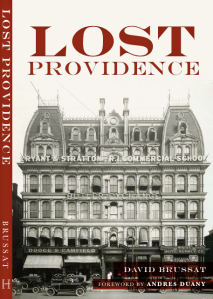
A map derived from the Global Positioning System, or GPS. (The Next Web)
In his recent essay in New York Magazine, “I Used to be a Human Being,” on how social media almost killed him, Andrew Sullivan wrote:
Our oldest human skills atrophy. GPS, for example, is a godsend for finding our way around places we don’t know. But, as Nicholas Carr has noted, it has led to our not even seeing, let alone remembering, the details of our environment, to our not developing the accumulated memories that give us a sense of place and control over what we once called ordinary life.
I read this a moment ago. I have not even finished his (very long, intimate) essay. It caused me to think of a passage from James Howard Kunstler’s remarkable The Geography of Nowhere, published in 1993, which I am rereading. He writes:
When Americans, depressed by the scary places where they work and dwell, contemplate some antidote, they often conjure up the image of the American small town. However muddled and generalized the image is, it exerts a powerful allure. For the idea of a small town represents a whole menu of human values that the gigantism of corporate enterprise has either obliterated or mocked: an agreeable scale of human enterprise, tranquility, public safety, proximity of neighbors and markets, nearness to authentic countryside, and permanence.
Despite the nearly universal imposition of the straight grid, with all its weaknesses, America’s small town streets at their best had some powerful saving graces. The houses were scaled generously – families were larger then, and multi-generational. No matter how fanciful, nineteenth-century homes were built of natural materials that aged gracefully. The procession of porches along the street created a lovely mediating zone between the private world of the home and the public world of the street, further connected and softened by the towering elm trees and the lush foliage.
The organic wholeness of the small town street was a result of common, everyday attention to details, of intimate care for things intimately used. The discipline of its physical order was based not on uniformity for its own sake, but on a consciousness of, and respect for, what was going on next door. Such awareness and respect were not viewed as a threat to individual identity but as necessary for the production of amenity, charm, and beauty. These concepts are now absent from our civilization. We have become accustomed to living in places where nothing relates to anything else, where disorder, unconsciousness, and the absence of respect reign unchecked.
And this was written almost a quarter of a century ago. In some ways, such as the anomie of our social mediated lives, it has gotten even worse. In other ways, such as the beginning of a revival of tradition and craft in building and design, it has gotten better, at least in some places, and with very much more to be done. A rereading of Kunstler’s book dips us into what we have lost, while opening our eyes today suggests that, except in a few areas such as the “slow” this or “slow” that movements, we have not learned a thing. (By the way, Kunstler’s novel series beginning with World Made by Hand predicts what the United States, at least, will come to as a result. Very engaging novel, as are its successors.)


